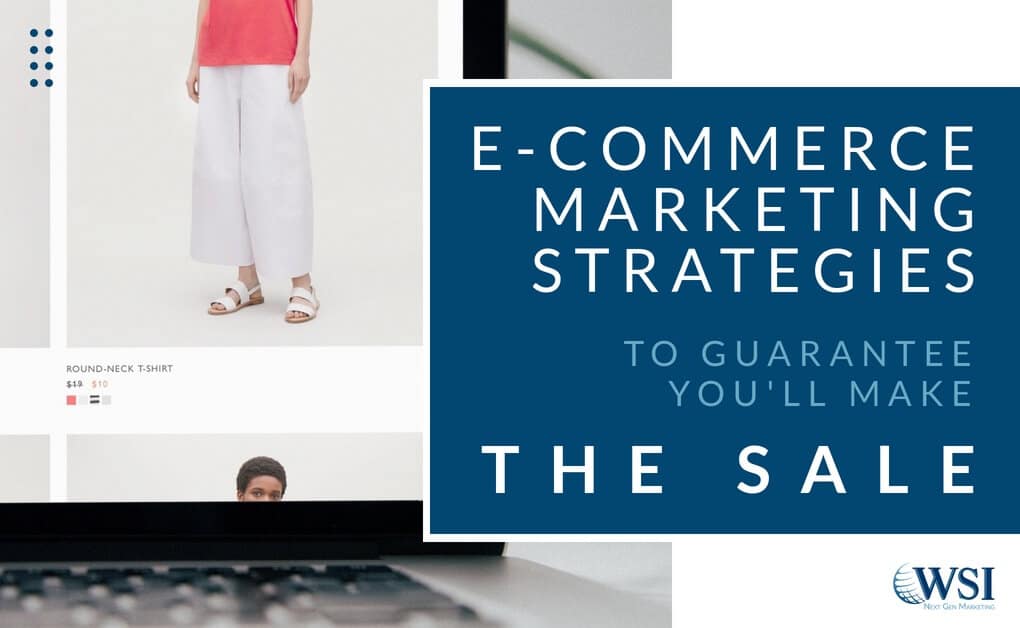If you’ve been online shopping the last month, then you’ve probably noticed Black Friday type sales on the rise. According to Adobe’s Digital Economy Index, U.S. e-commerce jumped 49% in April. Online grocery boosted the average with a 110% increase in daily sales. Electronic sales went up 58% and book sales doubled. April brought the largest drop in apparel prices leading to a 34% sale increase, and alcohol sales were up 74%.
What does it all mean? It means if you have an ecommerce website, you’re way ahead of the game.
But, unlike 30 years ago when the only competition was the store across the street, your competition is now all over the world and there’s millions of them. Fear not, because we have compiled a list of e-commerce marketing strategies to help you set yourself apart and convert visitors to leads. From social media marketing, to shoppable Instagram, to marketing automation, read on and find out what might just work for you.
1. Use Content Marketing
The first step is to build trust among consumers. Prove to them that you know what you’re doing with great content. Create blogs that position you as the leader in your industry. Are you selling wine? Create blogs with information about winemaking, the grape lifecycle, unique things that your winery does, etc. Are you selling shampoo? Write about the healthy hair tips, different style trends, what chemicals to avoid in hair care, etc.
Content serves a few main purposes: to build trust with audiences, to add valuable keywords to your website for search engines (SEO), to send referral traffic via sharing. You can share the blog social media, boost it, and see an increase in website visitors.
2. Show Reviews on Product Pages
Reviews are critical – they make or break a business. Have you ever bought something without looking at reviews? Perhaps you chose to ignore reviews one time and received a cheap-material piece of clothing that, when trying to return it, discovered the company suddenly disappeared? Same. We all learned our lesson somehow. Did you know 84% of people trust online reviews as much as their friends? You can easily integrate reviews into your product pages on your ecommerce website and help bump conversions.
Physical product gift cards may be great – we all love receiving a gift card for our favorite shoe brand or skincare products. But think outside the box. Experiential gifts are growing in popularity. People want to go on adventures – today’s newlyweds are requesting experiential gifts too. Gift cards can be a great addition to your online store if you are a seasonal business. Folks can purchase gift cards and use them at a later date.
A few tips: run marketing campaigns and digital advertising around popular giving seasons. Bring people directly to your gift certificate page when they click on your ad.l sports clubs, bicycle groups, gyms, dance studios, vintner societies, health associations – the list goes on. A lot of membership groups may require submitting payment by check in-person. Pretty inconvenient to today’s consumer. Luckily, there are many ways to integrate membership e-commerce solutions into your website. Collect payments online, create member directories, and foster an online community.
3. Create a Shoppable Instagram
Who else LOVES this feature? It turns browsing social media into browsing stores. If you sell online and have product pages, you may be able to add this feature to your company’s Instagram. Users can see tagged products on your posts and click into a product page. Not all e-commerce stores support this function. In that case we recommend creating a “clickable feed” with a third-party tool.
4. Incorporate Email Marketing & Marketing Automation
“Hey [Name], you left this in your cart. We kept it safe for you for when you’re ready to checkout.” We’ve all received a variation of this email and it may have led to a purchase or two. This is called “Cart Abandonment” and there’s more where that came from. Marketing automation is like a giant invisible hand guiding the consumer through the funnel. First, they browse your store and then leave. You send them a “browse abandonment” email or push notification with a discount. Then they come back and browse a product and add it to their cart. They leave and you send them a “cart abandonment” email. They finally come back and buy the item. Initiate the “thank you” email with related products they might like. You send them a “product review” email a few days after they receive the product.
Contrary to popular belief, this is not just for big business. A small business can absolutely take advantage of marketing automation.
5. Use Social Media Advertising and Retargeting
If you’ve searched for a product on Amazon, you’ve probably seen it advertised to you on Facebook. Really gives you that warm and fuzzy “Big Brother is watching you” feeling. But simply put, it works. Retargeting allows you to show ads to people who recently visited your website too or specific products on your website.
Go beyond social media marketing and try social media advertising. This gives you the ability to target people based on interests, behaviors, location, and more. You can even create audiences that mimic your existing customers – this is called a “lookalike” audience. Facebook can take an email list of current customers, create the ideal customer profile, and then tell its AI to go find people that match this profile. Fascinating, creepy, and genius. No one likes seeing ads about products that they don’t want. Facebook and Instagram advertising ensures you target people who are interested in your brand.
6. Try Google Ads
Google offers businesses the opportunity to rise the ranks of the search engine result page – for a price of course. This price can fluctuate drastically depending on how competitive your keywords are. For example, if you want to rank for a very common keyword, expect to pay quite a few dollars for a click. But, if you zero in on your target audience, find out what words they’re using to search for a specific product, you can be much more efficient with your budget. Google shows a few ads above the organic search results, and people absolutely will click on those ads.
Google Ads are no picnic. They require strategy and experience. Be sure to contact a marketing consultant to better understand your options and budget requirements.
7. Make SEO Your Best Friend
Oh, SEO. We love you. We hate you. We need you. Search Engine Optimization (SEO) is an essential piece of the marketing puzzle. Without SEO, websites just can’t rank well on search engine result pages. If you want your ecommerce website to rise the ranks of Google’s page, ensure that your website is optimized, meaning: do a keyword research, apply those keywords throughout your website, make code tweaks to ensure your site loads quickly, and create content which you publish on external sites for backlinks.
While SEO website optimization is usually a one-time deal, SEO for ranking is a continuous process and requires patience. The results can be seen months after you begin. If you’re in it for the long-haul, then consider SEO monthly services.
Strategies for Success
How will you apply these strategies to your e-commerce business? While you can just implement one or two tactics, creating a comprehensive marketing plan that incorporates multiple strategies will ensure you reach audiences at all touchpoints.
Need help creating an effective e-commerce marketing strategy? Contact us today and w can find the right path for your business.

